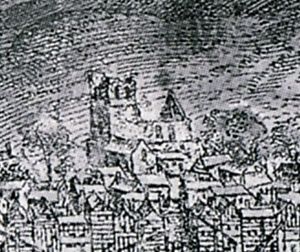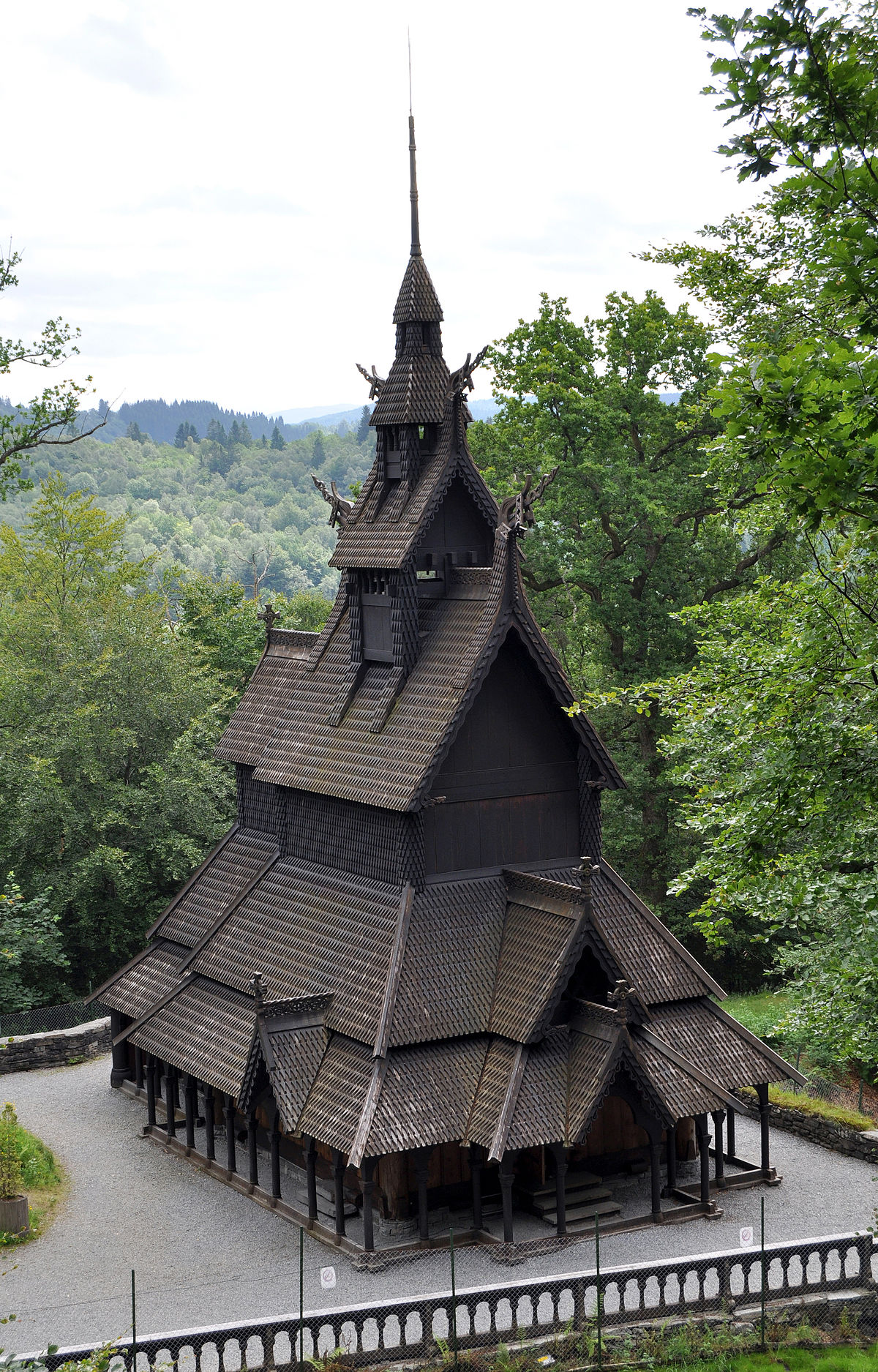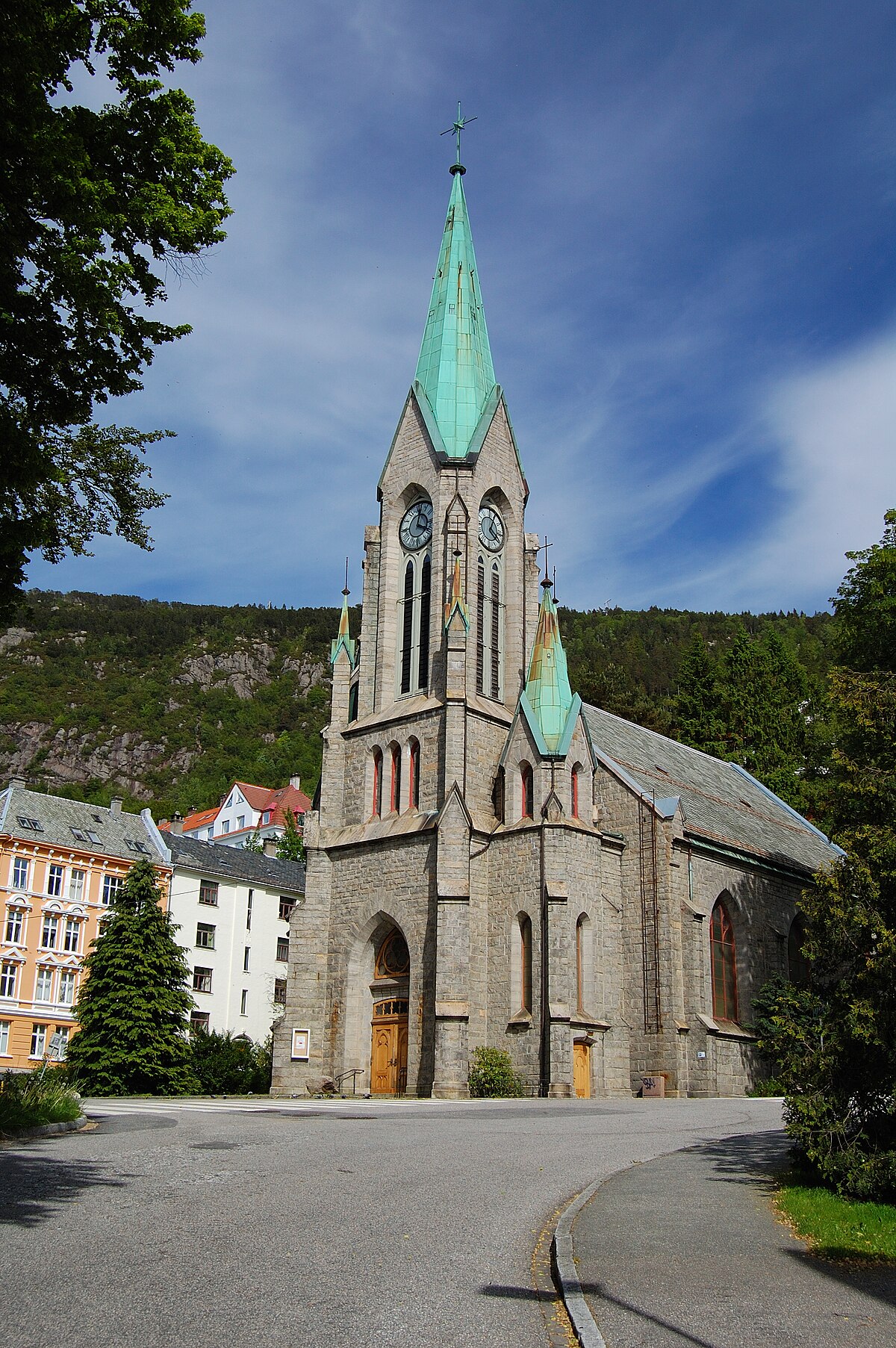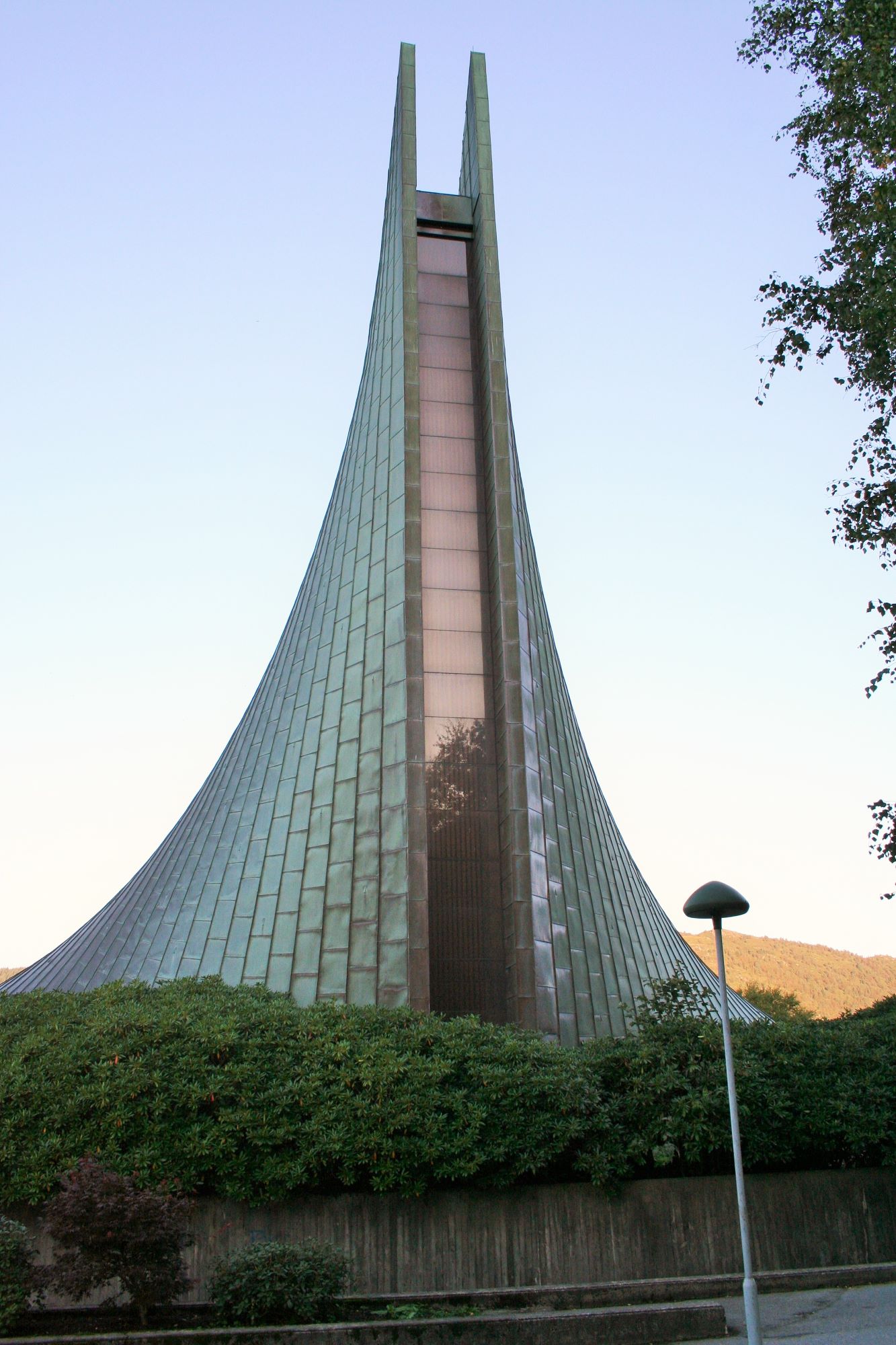Bergen is a city of churches; in fact, as early as the 13th century there were no less than 13 churches in the compact harbour area. Considering the city has had a large number of fires, churches have come and gone. Some have remained throughout history, though they have changed in appearance.
I know, when you visit Europe there are constant churches tour guides try to take you to. Trust me, I’ve heard it first-hand! Still, there’s no avoiding that Bergen is a city of beautiful, historic churches with a lot of history. During the summer months, most are open to the public and throughout the year most have regular service. Throughout the year, the churches are also the host of various concerts and performances. Be sure to check the list of Bergen events for when you plan to visit.
For this article, I thought I’d put together an overview of Bergen’s past and present, as well as some stories as to what happened within them. I’ve also tried to include visitors information & what takes place today inside each church.
A common question I get is: “What religion is that church?” Here in Norway, almost every church is a Lutheran church as that is the country’s main religion. All churches are Lutheran unless otherwise stated.
Enjoy!
Table of Contents
The Churches of Bergen Map
Churches That Are No More
The Christ Church (Kristkirken)
This one is probably the most gut-wrenching, especially when you consider how important it was historically. Olav Kyrre founded Bergen in 1070 and the town served as the capital in the 13th century. The royal palace was located where Bergen Fortress is today and this was arguably one of the most important sites in the country.
Olav Kyrre was the one who commissioned the Christ Church; it was originally a small wooden church. The small wooden church didn’t last long; Christ Church was rebuilt in stone in the 12th century. The church functioned as the site for the crownings of Norway’s various kings. Christ Church is important historically as it is where the first King’s of Norway were crowned. King Magnus Erlingsson was crowned here in 1163. The following royals were then crowned here:
- The rebel king, King Sverre Sigurdsson (1194)
- Our peacetime King, King Håkon Håkonsson (1247)
- His son, King Magnus Håkonsson (the Lawmender) (1261)
- And then his son, King Eirik Magnusson (1280)
The choir of the church held the graves of some of the last King’s of Norway’s oldest royal dynasty, which had started with King Harald Fairhair in the 10th century, as well as some of King Sverre’s dynasty. The church also held the remains of Saint Sunniva, the patron saint of Western Norway.
Loss of the Church
Shortly before the Reformation in 1537, the Christ Church was destroyed for military reasons. Norway had entered into a union with Denmark and the Danes wished to turn the old royal palace into a military fortress; similar to what it is today. The relics inside the church were taken away and melted down to be turned into coins, including Saint Sunniva’s casket.
Today no trace of the church remains. You can see where the church stood thanks to a row of hedges that have been placed over the original foundations. There is a memorial statue at the site where the altar used to stand. It has a list of all the Kings and Queens who were buried here and an image of Saint Sunniva.
Read the history of Bergen by clicking here.
The Small Church of the Saviour (Lille Kristkirke)
We don’t know that much about the Small Church of Our Saviour. The church was likely built of wood and therefore fits the ‘stave church’ style. It may have been used as a prototype for the small rural churches across the country, and the best examples are found at Urnes and Kaupanger today.

St. Nikolai’s Church (Nikolaikirken)
Poor, poor St. Nikolai’s Church. This church didn’t have much luck when it came to longevity. When the Hanseatic League moved in, they preferred St. Mary’s Church and turned it into their German Church. In the earliest picture we have of Bergen, from 1580, we can see that St. Nikolai’s is rotting in the background. This may be because of the Reformation when many of Bergen’s churches went out of business. However, the proximity to the Hanseatic League leads us to believe that the locals just didn’t want to use it. The first town hall (until 1558) and the town square (until 1470) were located next to the church. Both of these moved after fires, and it’s another reason why St. Nikolai’s lost its importance. If you want to see the town hall, it’s underneath the car park on Nikolaikirkeallmenningen!
The Old Sagas mention the church; first in 1160 and again in 1198 when the church burnt down. After it was rebuilt, it became an important fire watch station. Absalon Pedersøn Beyer wrote of the church in 1567 when he said that the Norwegians who lived close to Bryggen had used the church. Once the Hanseatic’s began to dominate, locals stopped using the church.
Nothing remains of the church today, just the street name ‘Nikolaikirkeallmenningen’; a classic example of crazy long Norwegian street names.
St. Margareta Church (Margaretakirken)
Another church we can’t quite place on the map, but it was likely close to the Aquarium at Nordnes. This church has a fascinating story with it; the story of Princess Margareta of Norway and Scotland:
The Story of Princess Margareta
Princess Margareta was the daughter of Eirik Magnusson and Queen Margareta Alexanderdatter, who was of Scottish origin. Eirik was the son of Norway’s King Magnus the Lawmender. Eirik was crowned as the King of Norway along with his wife, Margareta at the Christ Church in 1280. In 1283, Princess Magareta was born, but sadly the same year her mother died and was buried at the Christ Church in Bergen.
Princess Margareta became recognised as the heir to the Scottish throne. At the age of six, Princess Margareta was sent to Scotland to marry Prince Edward (who later became King Edward II of England). However, Margareta never married. She fell ill and probably died at the Orkney Islands in 1290. Her body returned to Bergen and was buried alongside her mother.
Ten years later, in 1300, a woman appeared in Bergen claiming to be Princess Margareta. By then, King Eirik had died and couldn’t confirm it was his daughter. This new Margareta had arrived by ship with her husband from Lubeck. She told the locals that she had travelled to Scotland but was sold by her foster mother, Ingeborg Erlingsdatter. She ended up in Germany where she got married. Now she was back and wanted to assert her rights as the royal daughter!
The locals actually believed her, but the bishop and authorities didn’t. ‘Margareta’ and her husband were convicted as imposters. The man was beheaded and the fake Margareta was burned at the court in Nordnes in 1301.
Despite this, the locals had great faith in the fake Margareta and began to pilgrimage to her court. Worship of her was banned in 1320, but people continued to praise her. The fake Margareta had been dead for sixty years when a church was built in her honour.
Source: http://www.histos.no/bergen/Margaretakirken
Was she real?
Was Margareta real or not? Probably not. The fake Margareta had grey hair and claimed to be forty years old; the real Margareta would’ve been 17. Also, when Margareta’s coffin had returned to Bergen, King Eirik had opened the coffin and confirmed it was, in fact, his daughter.

Church of the Arch Angel Michael
The Munkeliv Monastery stood tall at Nordnes; it was, after all, the largest and most wealthy monastery in Norway. Part of the monastery housed the Church of the Arch Angel Michael, built some time in the 12th century. During the Reformation, the commanding officer of Bergen set fire to the church. Archaeological excavations in the 19th century uncovered the site of the church, which today is at Klosteret 4-8. The site is at the top of the hill as St. Michael in Europe is typically worshipped on mountain tops or in natural caves.
St. Hallvard’s Church
St. Hallvard’s Church was a tiny church located near Lille Øvregaten. Some of the church wall remains, located in between the apartment buildings at Halvardkirkeplassen.
St. Lawrence’s Chapel
This small chapel existed between where the Bryggens Museum and St. Mary’s Church is today. You can still see the foundation walls, with the entrance carved out.
Norway’s Reformation City
In 2017, Bergen was Norway’s Reformation City. This video explains what exactly happened to the churches during the Reformation. They’ve also got a self-guided Reformation walking tour, which you can view here: https://bergen1517.com/walking-tour/
Current Churches
St. Mary’s Church (Mariakirken)
St. Mary’s Church is the oldest and most authentic church in Bergen; built between 1130 and 1170. Since Christ Church was nearby, St. Mary’s wasn’t the main church in Bergen. When the Hanseatics came to Bergen, they were given St. Mary’s to use as their church. St. Mary’s Church became known as the ‘German Church’ until the early 20th century. Thanks to the Hanseatic merchants, however, the church has been kept in wonderful condition.
Since St. Mary’s Church is one of the must-sees of Bergen, I’m going to explore it closely in a separate article.
Church Service: Sunday 11am (English)
Visitors Information: Open during the summer months. Will not open in summer 2020 due to the coronavirus
Source: https://ajapaik.ee/photo/74006/korskirken-bergen/
Holy Cross Church (Korskirken)
The Holy Cross Church was first built in 1181. However, this church has burnt down in almost every fire that Bergen has had, and gradually it has changed form. It has a variety of architectural styles; from the Renaissance portal to the Romanesque walls.
Originally there was a large churchyard around the church, but over the years it has gradually been closed in. On the northern wall, you can see one of the remaining gravestones. It is for Alida Fisher, the daughter of one of Bergen’s most renowned bishops, Johan Nordahl Brun. Alida married schoolmaster Johan A. Fisher and became a mother to a boy before she died when she was 16 years old in 1801.
On the south-east all is a monument commemorating the dead at the Battle of Alvøen, a navy battle between the Norwegian and English in 1808. This episode of the Napoleonic War greatly stimulated patriotism in Bergen, though fighting the English was tough for many due to the long trading history.
Today the city missionary uses the church. Every Wednesday at 12pm is masse, and on other business days is a prayer at the same time. The church also host’s the annual Grieg Festival.
See the program for the 2020 Grieg Festival here: https://www.grieginbergen.com/program.html
Church Service: Mon-Tues, Thurs-Fri prayer at 12pm. Wed masse at 12pm
Visitors Information: Not generally open to the public, though you can enter if the doors are open.

Bergen Cathedral (Domkirke)
The Bergen Cathedral has existed for 900 years, though its appearance has changed over time. The church was originally called St. Olav’s Church and received its new name after the Reformation in 1537.
The Franciscan Monastery took over the church in the early 13th century. Their church was plain, with only one nave and a few ornaments. The church burnt twice during the time they owned it, in 1248 and 1270. King Magnus the Lawmender had the church rebuilt. When King Magnus died, his remains were placed in the church. Well, according to legend anyway. No remains have ever been found in the church.
St. Olav’s Church became the Bergen Cathedral after the Reformation. The Bishop had a residence built there, and a lavish garden planted. The garden had fish ponds, herbs, and wonderful trees. There were even fruit trees from abroad and they cultivated figs, vine, chestnut, coriander and laurel. Some trees even had apples. After the plague came to Bergen in the 17th century, the graveyard was continuously extended.
Watchmen used the tower from 1624 until 1903. The lower part of the tower has a cannonball embedded in its wall after a battle between the English and Dutch in Bergen harbour in 1665. The tower was rebuilt with a baroque spire after the 1702 fire. A medieval wall on the south side of the tower was restored in 1880.

Source: https://kirken.no/nb-NO/fellesrad/Bergen/menigheter/bergen-domkirke-menighet/om-oss/kirkene-vare/domkirken5/
The New Church (Nykirken)
‘The New Church’ dates back to 1621. The locals at Nordnes complained it took too long to walk to the Bergen Cathedral, so they wanted their own church.
The Archbishops Residence
The remains of the Archbishop’s Residence lie underneath the church. There were other churches on the peninsula already in the 13th century, and the Munkeliv Monastery was also active. The Archbishop has lived on Nordnes since the 13th century. The Archbishop’s residence doubled as a merchant house, as the Church had large estates in Northern Norway and a sound financial connection to the fisheries. The Archbishop relied on the Hanseatic League at Bryggen to export the episcopate’s fish and at the same time import the goods needed by the Archbishop.
It is still possible to see the ruins of the Archbishop’s Palace under Nykirken. The remains indicate that the palace had an area of 500m2. The estate must’ve looked like a fortress, with thick walls around it.
The exterior of Nykirken resembles its 17th and 18th century originals. The baroque portal from 1670 has the monogram of King Christian V on it. After every fire, there was a great effort into keeping the original style of the church. However, due to economic reasons, the church existed without a steeple for many years. The original steeple was added after the church was rebuilt in 1956.
Nykirken is now the ‘children’s church’. If you visit the church, you’ll see that it has been extensively decorated in children’s art.
Visitors Information: The church opens to the public during the summer months. Between June and August, it is open Monday-Friday 10am-2pm.
Church Service: Sunday 11am (in Norwegian)

St. John’s Church (Johanneskirken)
St. John’s Church is one of the newer churches in Bergen; built between 1891 and 1894. The church is built in a Neo-Gothic style with Dutch red brick and a copper roof, which has turned green over the years. It is the main church for the Lutheran religion in Bergen. It is also the tallest building in the city; the tower is 61m high. The church seats 1,250 people.
Visitors Information: The church has a regular program, but generally it is open Thursdays 2pm-4pm; Fridays, and Sundays. Sometimes there is an organ concert on Thursdays in the evening. Find more info at the website (in Norwegian) here: https://kirken.no/nb-NO/fellesrad/Bergen/menigheter/bergen-domkirke-menighet/om-oss/kirkene-vare/domkirken4/
Church Service: Sunday 11am (in Norwegian)

St. George’s Church (Sankt Jørgen Kirke)
St. George’s Church was built as the hospital chapel in Bergen since the main medical institutions were all close by. It is also located next to the leprosy hospital, which was first mentioned in history in 1411 and at the time was run by the Nonneseter Abbey. The church was originally just for the leprosy patients, but eventually, it became its own parish serving the surrounding area. The parish was also a base for chaplains at the nearby city prison, poor house, and home for the widows.
The church burned down in 1640 along with the leprosy hospital and wasn’t rebuilt until after the fire of 1702. The present appearance is the result of a major construction in 1789-1790.
Visitors Information: You can enter the church as part of a visit to the Leprosy Museum.

Fantoft Stave Church
Fantoft Stave Church isn’t technically an active church; rather, it is an attraction that is open during the summer months. Still, I had to include it!
Built in the 12th century, Fantoft Stave Church was originally located at Fortun on the Sognefjord. In the 19th century, the village wanted to get rid of it and build a new church. The Bergen merchant F. Gade heard of this and bought the church. In 1883 he re-erected it here on his farm at Fantoft and decorated it to look like a real church, including putting a fake grave in front of it.
In 1995, the church was the victim of arson and burned down. Meticulously rebuilt, today has more of a ‘typical stave church’ appearance.
I will do a separate article on Fantoft soon!
Visitors Information: mid-May to mid-September 10:30am – 6pm
Church Service: No church service.

Sandvik Church
Sandvik Church was built in 1881. The design for the church was a competition, and the winning architect was Ernst Norgrenn. Ernst Norgrenn passed away before his plans were realised. Renowned architect Schak Bull (who designed Troldhaugen) took over and completed the church.
The church seats 500 people.
Landås Church
Landås church dates back to 1966. The style is very post-war, built in concrete. It has offices, parish halls and seats about 600 people.

Slettebakken Church
This is perhaps one of the most unique churches in Bergen. Slettebakken Church was built in 1970. Tore Sveram was the architect. He has designed many modern churches influenced by contemporary architecture. The municipality was wary of his vision, but the parish was very excited. It certainly stands out today!
St. Mark’s Church
St. Mark’s Church dates back to 1939. Built in the functionalist form, it is one of the few churches in Norway in this style. They did try to soften it with some elements of art deco. The church seats 650.

Source: https://www.wikidata.org/wiki/Q11982996
Laksevåg Church
Laksevåg Church is one of my favourite churches, though it may be because I pass it every day on my daily walk. Constance Janson, the widow at Damsgård Manor, gave the plot of land and funded the construction of the church. Laksevåg Church was completed in 1874. The church has beautiful decorations both inside and out, such as the sculpture above the church door. Woodcarver Odd Ystanes made it; he’s the one who taught the famous woodcarver Lars Kinsarvik.
St. James Church
St. James Church was built in 1921. The youth community group has used the church since 2003. The church consists of a sound studio, computer room, church room, a living room, and a kitchen.
St. Pauls Church
St. Paul’s Church is the only Catholic church in Bergen. Father Christopher Holfeld-Houen founded the congregation in 1857. It was granted church status in 1870. At first, there were only between 20 and 30 members. As of 2012, there were just under 12,000 members.

Source: https://mapio.net/wiki/Q1770324-en/
Fana Church
Historically, Fana Church is one of the most important churches in Bergen. It was first mentioned in documents in 1228, when Pope Gregory IX wrote about it in a letter. In medieval times, it was an important pilgrimage site because of a miracle silver cross. According to legend, two brothers (one of them blind) must have fished a silver cross outside Korsneset in the Korsfjord in Fana. After touching the cross, the blind brother could see again. They brought it to Fana. The sick came to touch the cross, and magically were healed as well! The ill supposedly threw away their crutches after touching the cross. In 1546, the priest Peder Simenssen burned six horse carts full of crutches.
The Lord of Bergenhus, Tord Roed, took the silver cross during the Reformation. As he was sailing away, his boat sank. The cross was lost forever.
A private owner bought Fana Church in 1723. This was fairly common at the time; The Danish-Norwegian monarchy desperately needed money, and Norway had a lot of old churches. It remained privately owned for 150 years. Two villagers were able to buy the church, and by that time it was in serious disrepair. Most of the furniture was gone; auctioned off and lost. The church was heavily restored.
Sources
Nordhagen. Per Jonas. Bergen Guide & Handbook. Bergensiana-Forlaget. 1992.
Pedersen, Annette-Friis. Bergen: Streets Broad & Narrow. Histos Forlag. 2005.
Histos Website: http://www.histos.no/
Various Norwegian Wikipedia Articles











